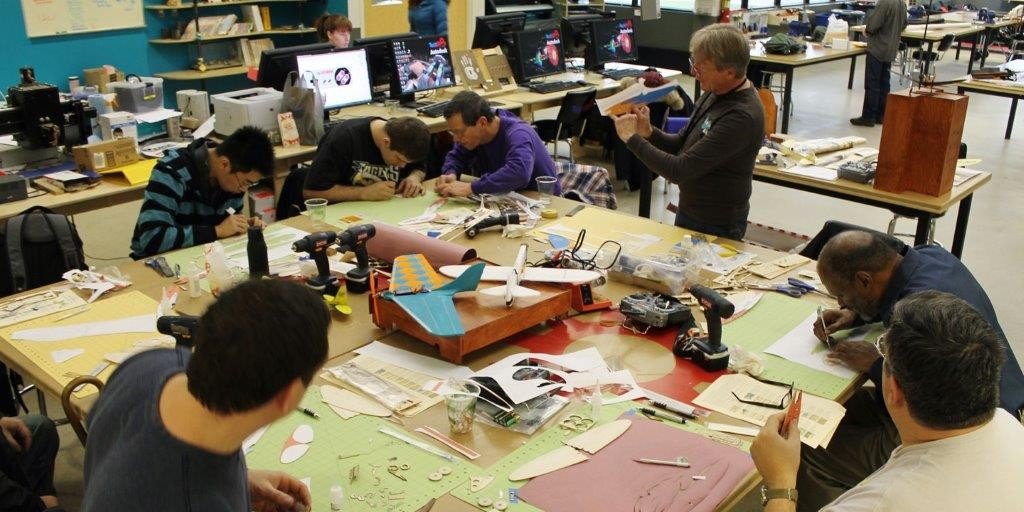Impact of recent transformations
The transformations that occurred in the 1990’s have profoundly changed the world of craft work, rendering obsolete the traditional view that continued to survive in a general sense, but which no longer corresponded with reality. The general view associates the craftsman mainly with manual skills, an ability learnt with practice, in the “workshop”. The common point of view – which didn’t take into consideration that many women were among the “new artisans” – considered the craftsman someone who did not want to study and went to learn a trade, either directly in the workshop, or by attending a professional training school or carrying out an apprenticeship.
The type of higher education known as technical has always been characterized by a dichotomy: on one hand the high schools, on the other, schools of arts and crafts considered the Cinderella of education. All this, as well as having negative consequences in the relationship between school and society, is related to a concept that assigned to crafts and continues to do so, a marginal role and a residual one in the economic development of a country. Contributing to this vision significantly was the story told in the history of industrial development, which as it focused entirely on large enterprise, does not give due importance to the districts and medium business success nor does it highlight the importance of the artisan crafts.
The results of socioeconomic development have highlighted the inadequacy of this view, which has not been able to evaluate the specificity of production in many countries of Europe. A production deeply characterized by a craft based businesses in the territory, capable of exploiting the opportunities offered by the information revolution. The weakness may instead be identified as the continuing separation between school and work, the difficulty of harmonizing the two fundamental aspects of training: theory and practice. This should be done at all levels, including universities, and therefore also between science and technology, research and industry.
Cultural and social capital of crafts
The craftsman, in a spontaneous way, always embodies the crossover between knowledge and work, intelligence and professional skills. In particular the most advanced category of young artisans, up to date with the technological revolution, show great initiative and a high propensity to innovate and for entrepreneurship. In the new global scenarios that require a rapid shift towards quality production, with huge market potential, the artisan crafts can play a leading role. It is not at all marginal but fits perfectly in a model of economic organization, vital but ignored by information. In this context, more than financial capital and political power, on which the old industrial bourgeoisie relied, the things that count are:
[bullet_list icon=”play” indent=”10px” style=””]
- Cultural capital, ie skills and professional abilities, creativity and spirit of initiative, self-esteem from assets bearers of meaning
- The social capital, or the ability to create networks of relationships (a feature which was very much present in crafts historically and can be resumed at a new level and broader areas in the era of immaterial community assets.
[/bullet_list]
Young artisans are placed increasingly in this development perspective. This is even more evident in new trades. In fact, activities related to the net economy and new technologies often require limited investment in fixed capital and can be started with a relatively low initial capital budget. At the same time however these activities require a strong personal and relational capital that makes those who work in this sector real “artisans of knowledge.”
Also the craftsmanship of the traditional sectors, no longer tied to a small local market, has transformed, combining know-how with the ability to communicate, in line with the imperatives of modernity in continuous transformation that rewards the intangible factors, both in production and in consumption.
Despite continued poor perception from the outside, the world of artisan crafts has evolved profoundly. Modern craftsmanship enjoys prestige equal to that of other professions. Indeed, it may be preferable because it allows for the realization of aspirations and values that have spread in the younger age groups: autonomy, self-realization, self-affirmation, the possibility of combining income and meaning. Even the appearance of craft businesses is changing. While traditionally it was based on familial transmission of the craft from father to son, in the newly established companies the work association between friends is more common, between people who have worked together previously as employees of the same company.
Now consider and discuss with your tutor the following questions:
[bullet_list icon=”play” indent=”10px” style=””]
- Why, in the popular imagination, was and is artisanal craftsmanship considered the appropriate occupation for those who have no desire to learn and the schools of arts and crafts considered the Cinderella of education?
- Why are there no adequate data and studies to understand the real social and economic dimension of craftsmanship?
[/bullet_list]




